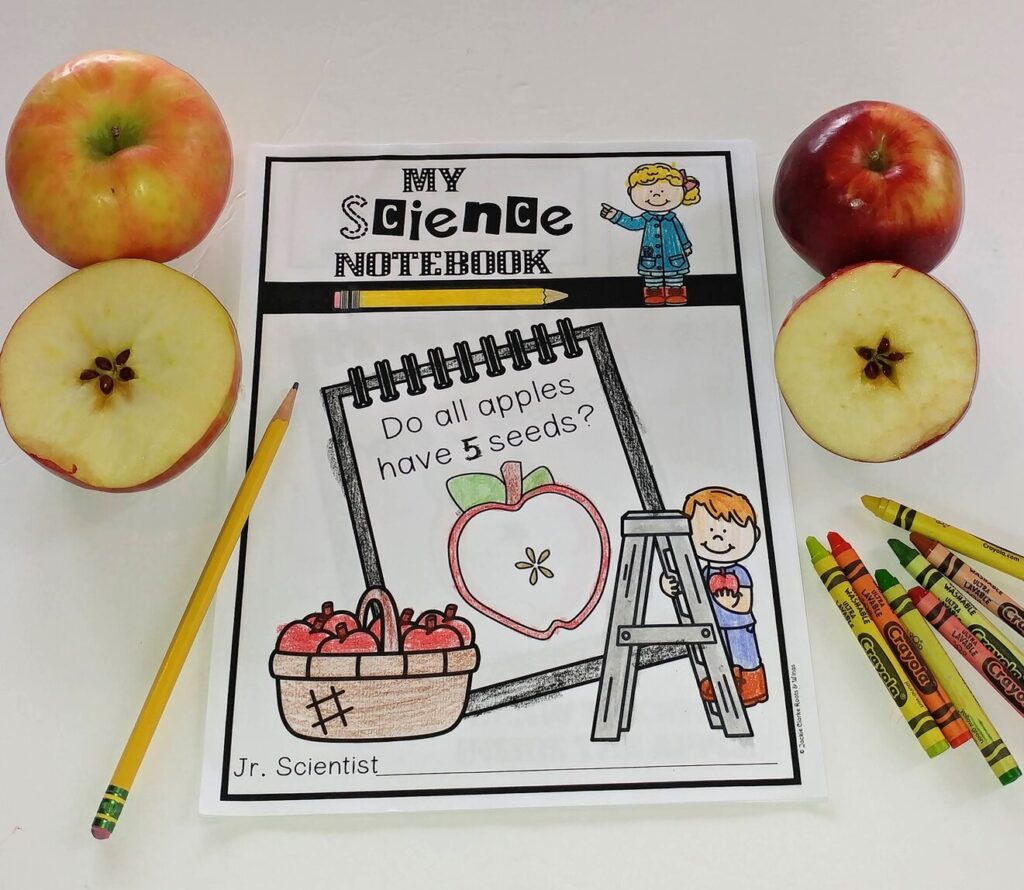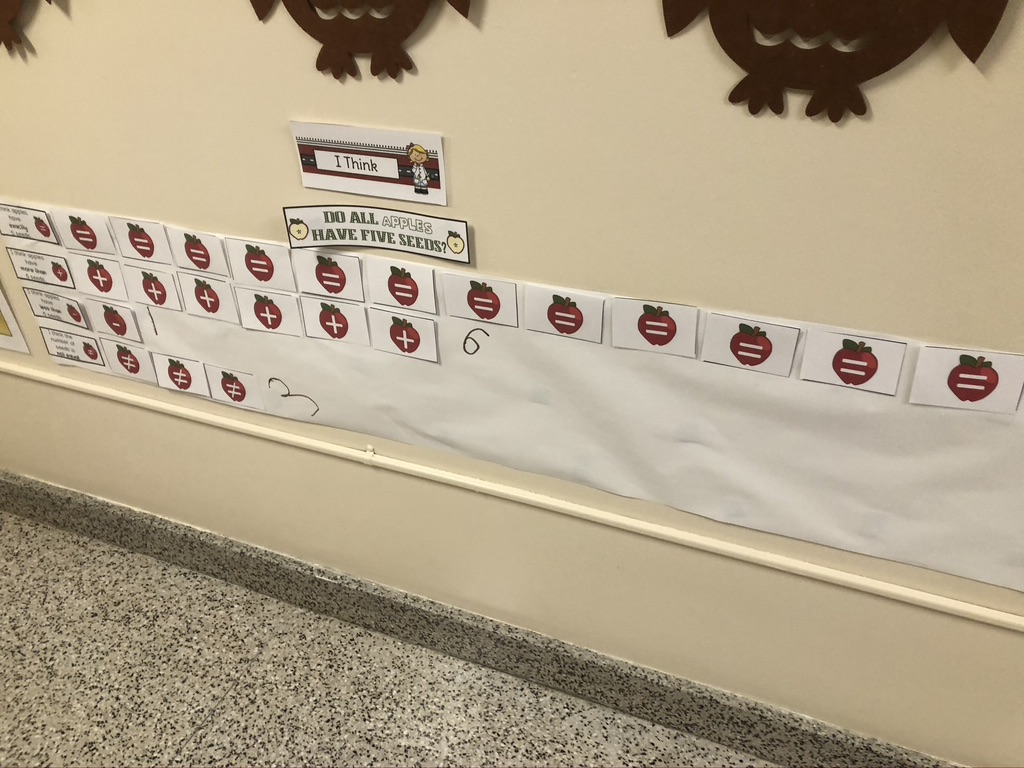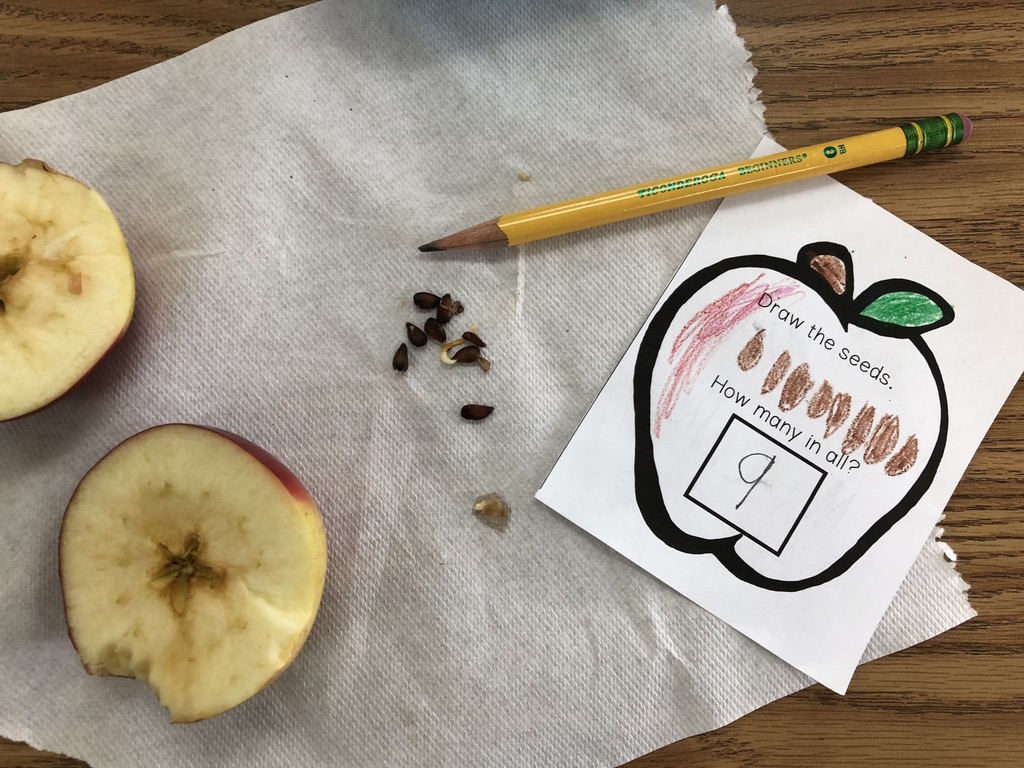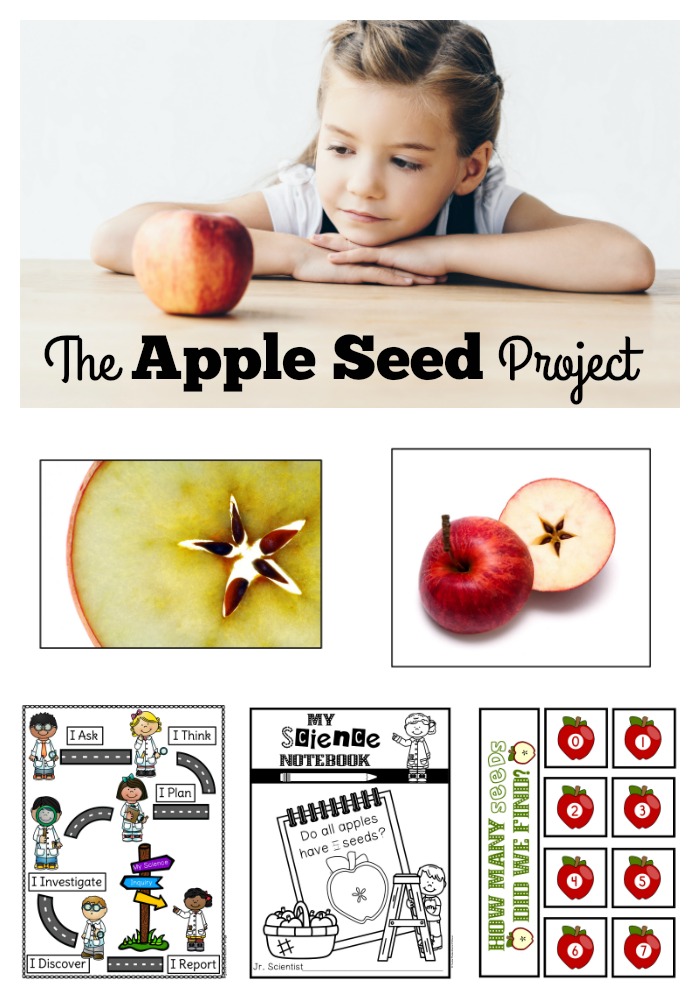Inside: Try this apple seed inquiry to introduce your kindergarten class to inquiry-based learning, the scientific method, and how to ask questions.
Our Inquiry Path
This inquiry began quite accidentally while reading a book, and grew into a wonderful math and science experience for my kiddos. I now repeat this inquiry every year, because it is rich with learning opportunities and a great way to introduce my new kindergartners to the scientific method early in the fall.

The Apple Seed Inquiry
In the book, The Apple Orchard Riddle by Margaret McNamara, a class of young children take a field trip to an apple orchard.

The farmer challenges the children to find a little red house with no doors and windows and a star inside. One child solves the riddle, by discovering the five-pointed star inside the apple and pulls out five seeds and counts them.
Ask a Question
When we got to this part in the story, I told the children that I had a question. I showed them the Inquiry Path (see above) and said that this is the first step for a scientist when they are beginning an inquiry or a learning journey. I wrote the question down and we posted it on our Inquiry Board.
Share Your Thinking
Next, I asked the children, if ALL apples have five seeds, one for each point in the star? I told them that scientists make a “smart guess,” called a hypothesis to show what they think the answer is to the question.
I gave them a Science Notebook and asked them to draw/write to show their thinking to the answer to the question.

They circled a math symbol to show whether they thought apples have more than 5 seeds (+), less than 5 seeds (-), exactly 5 seeds (=) or different numbers of seeds (≠).
We then created a graph to show our thinking.

Create a Plan
Next, I asked children how we could find out if all apples had five seeds. We came up with a 3-step plan and listed materials that we would need for our investigation. These steps included cutting an apple in half, removing the seeds, and counting them.
Conduct an Investigation
Before we began to carry out the children’s plan, I reminded them of their “hypothesis,” and that the purpose of our investigation was to prove or disprove that all apples had five seeds.
Then, I paired children up and gave them an apple, already cut in half crosswise. They worked together to remove the seeds and draw them in their science notebook, as well as on an apple cut out that they were given.

Discover the Results
Using the children’s apple cut-outs, we created a graph to show our results.

Children could easily see that all apples did not have 5 seeds and instead, had different numbers of seeds. We recorded these results in our Science Notebooks and talked a little about variables. I asked the children to think about whether or not we would get the same results if we used different-colored or different-sized apples.
Share What You’ve Learned
We then talked about what we’d learned and worked together to write up our results.

We posted them outside our classroom along with our graph to share what we’d learned with others.
Beyond the Apple Seed Inquiry
Once the inquiry was finished, I asked children what they still wondered about apples. They asked great questions that we could continue to explore beyond our apple seed inquiry.

Rather than throwing the apples away, we used them to make apple prints in the art center.

The children began noticing seeds inside their fruits and bringing them into class. They were counting numbers of seeds and wondering about planting the seeds and if they would grow.

This inquiry was rich in both content and the process skills that make up the scientific method. Children learned what a question was, how to ask it, and most importantly, that their questions were valued and heard.
Try the Apple Seed Inquiry with Your Class
If you are interested in trying the Apple Seed Inquiry with your own students, I’ve put everything together in one packet that includes the inquiry path poster, detailed instructions for each stop on the path, the science notebook, full-color apple posters, and all the graphing markers. All you’ll need is the apples and a set of curious kids!

To see more of our inquiry projects, visit Kindergarten Inquiry, Project and STEM Ideas Across the Seasons.
For more science and inquiry ideas, visit the Growing with STEAM page inside the Roots & Wings Resource Library.



 Using a Workshop Model to Teach Future-Ready Skills in Kindergarten
Using a Workshop Model to Teach Future-Ready Skills in Kindergarten Kindergarten Writing Assessments that Show How You Grow
Kindergarten Writing Assessments that Show How You Grow 5 Earth Day Projects for Kindergarten
5 Earth Day Projects for Kindergarten Using Classroom Rules to Build Positive Language
Using Classroom Rules to Build Positive Language
This site is absolutely incredible! Thank you Thank you Thank you! I am in the last year of my education degree and going to be doing a stage in kindergarten before I graduate. I am so grateful for what you have put together here!
Hi Samantha! I’m so glad you are finding this helpful! Good luck in your last year of school.